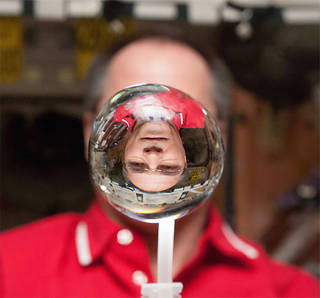
Audience
Educators, Students
Grade Levels
Grades 5-8, Grades 9-12, Informal Education
Subject
Careers, Life Science, Physical Science, Life Support, Living and Working in Space, Chemistry
Type
Hands-on Activities, Videos
NASA Role Model: Dr. Jill Williamson
NASA Center: Marshall Space Flight Center
Topic: Water Filtration on the International Space Station
Original Air Date: May 28, 2020
How does the International Space Station get clean water? Learn how NASA provides clean water to the space station by recycling all sources of water including sweat and urine. Watch the chat as the space station urine processor assembly subsystems manager explains how to turn today’s urine into water for tomorrow’s coffee.
STEM Short Activity: Experiment with Water Filtration
Objective: Work as a team to create a water filtration system that will produce filtered water with a pH level of 6.5 to 8.5.
Duration: 60 minutes
Materials Needed: 2-liter bottle, 10 layers of cheesecloth, rubber bands, Italian dressing, water with pH of 6.5 to 7.5, litmus paper, large clear plastic cups, paper plates, mesh bag, materials for filtration layers: gravel, play sand, activated charcoal, marbles, cotton balls, coffee filters, packing materials
Difficulty: Medium
Next Generation Science Standards MS-LS2-1
Common Core State Standards for Math: 6.SP.B.5
“NASA STEM Stars” is a webchat series. Each chat introduces a science, technology, engineering or math career, addresses a STEM topic and highlights a NASA mission. The chat includes a STEM activity that students can do at home. After the interviews, experts answer students’ questions.



























